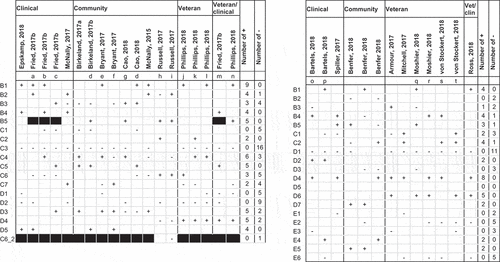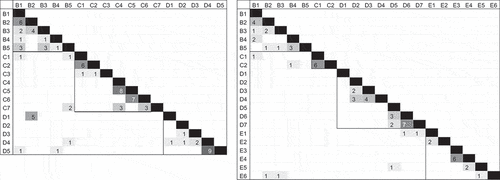Figures & data
Table 1. Characteristics of cross-sectional network studies of PTSS



